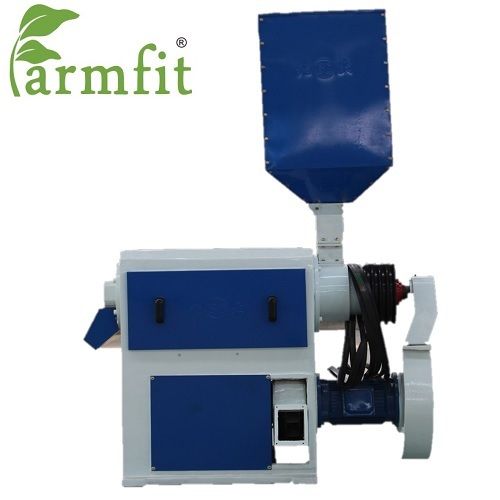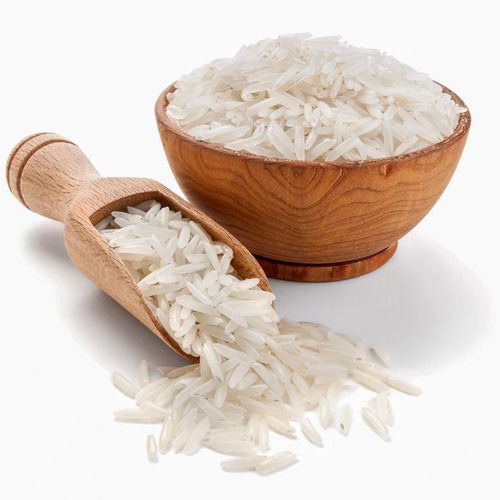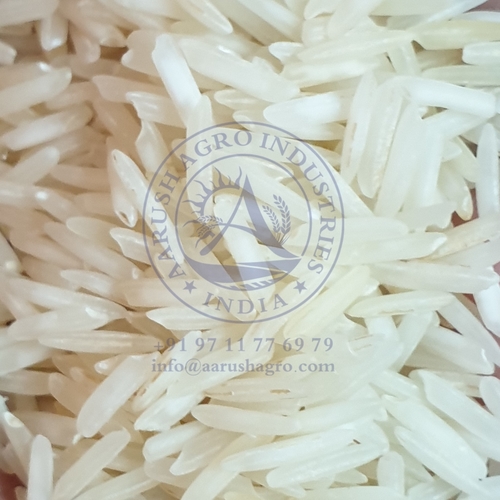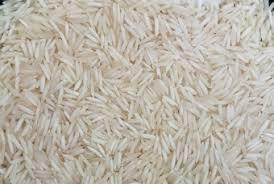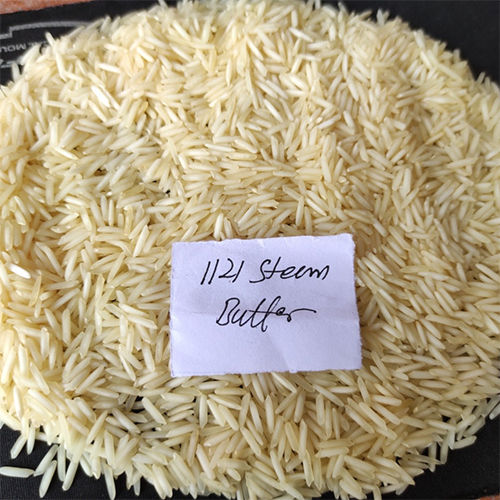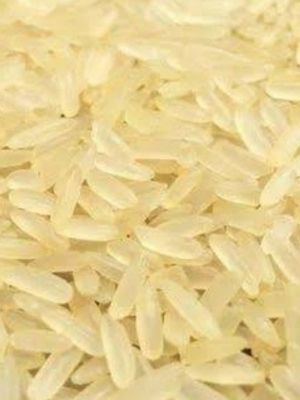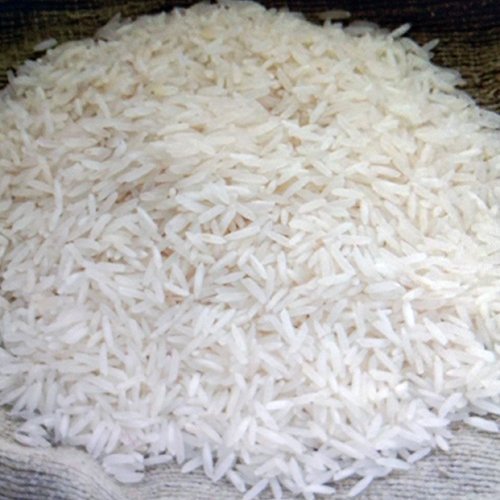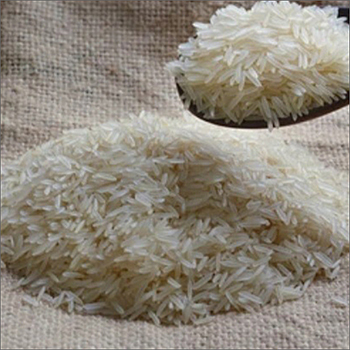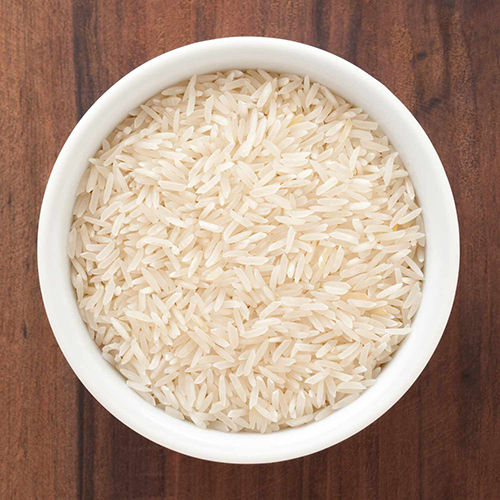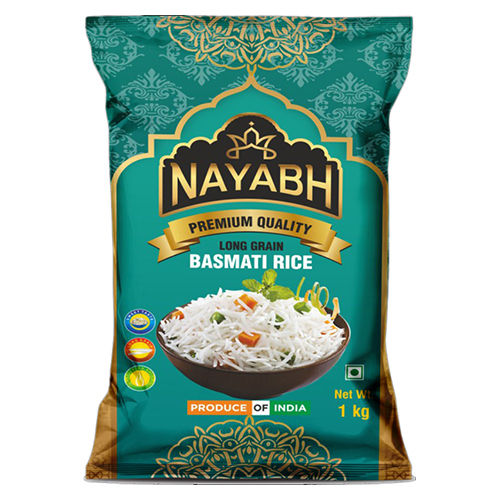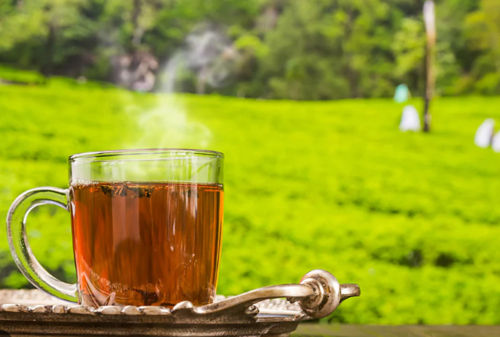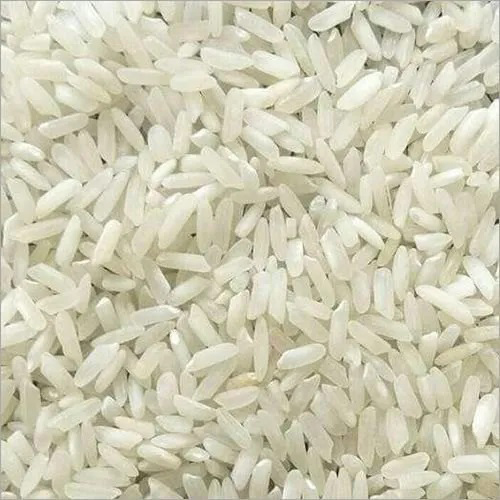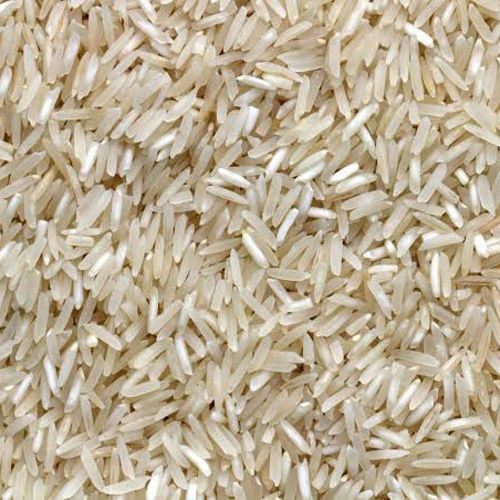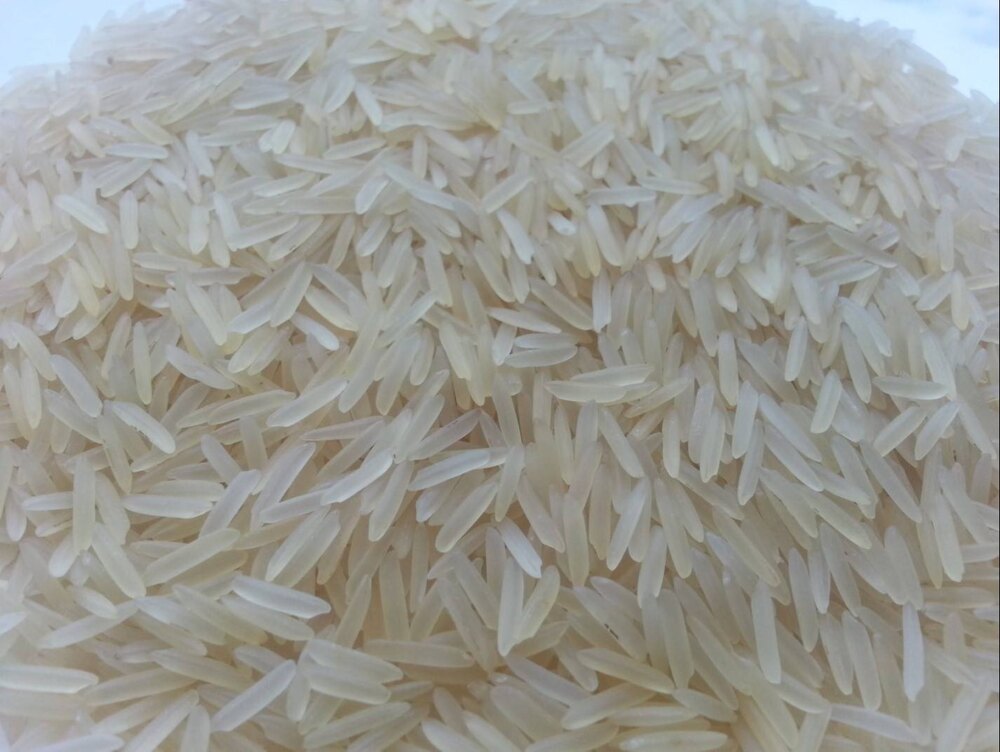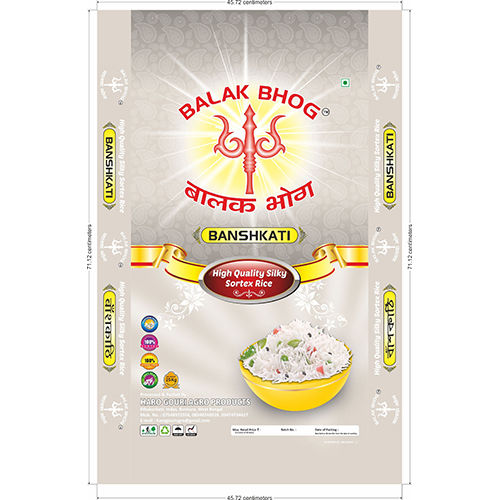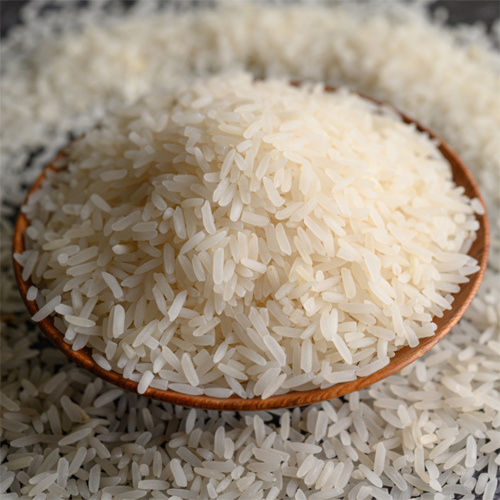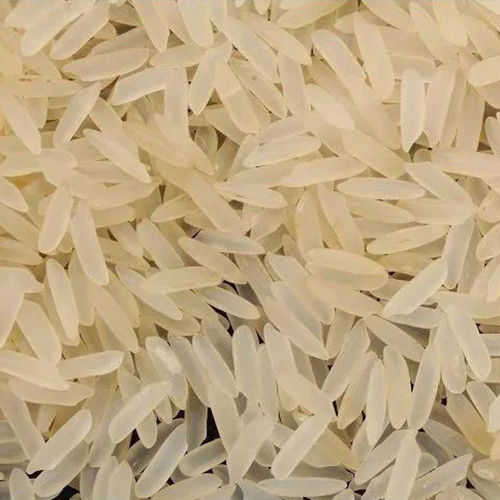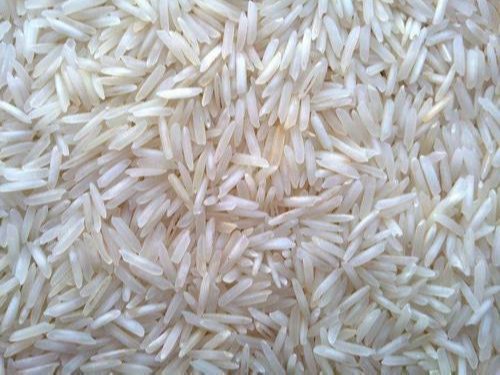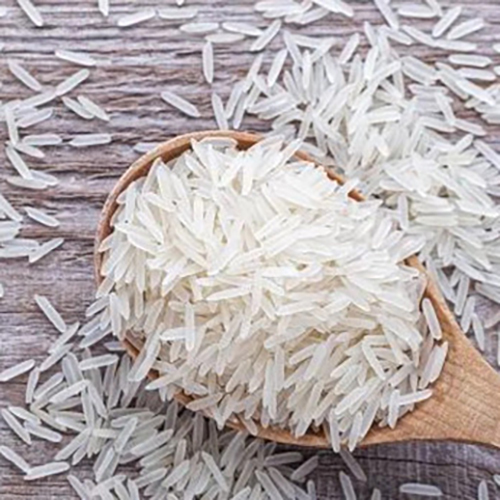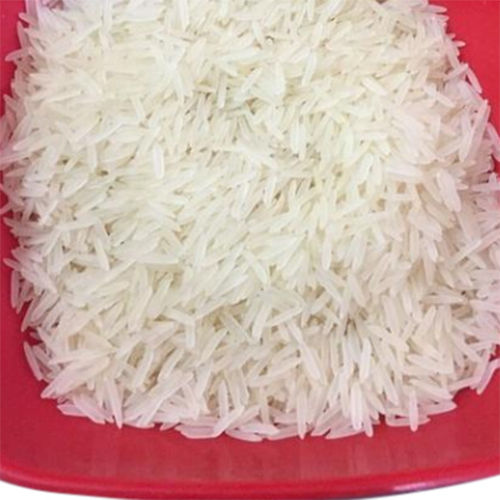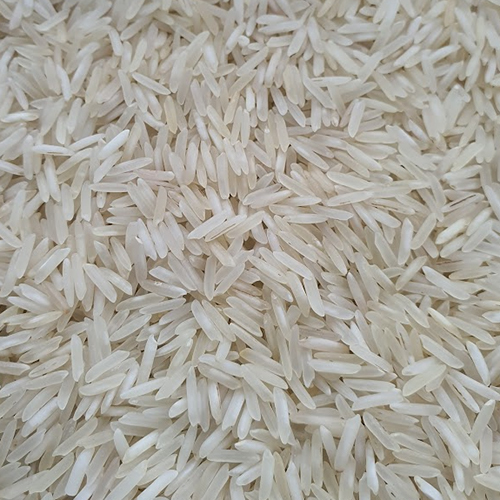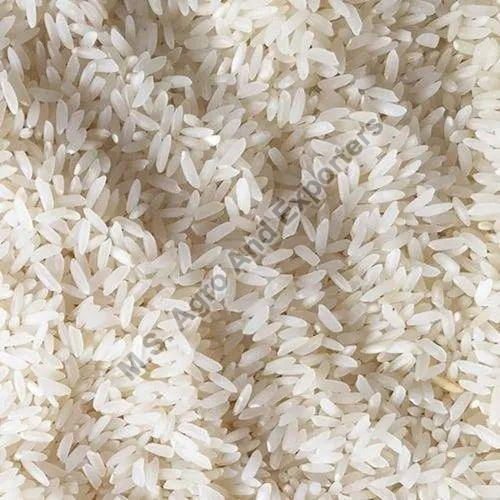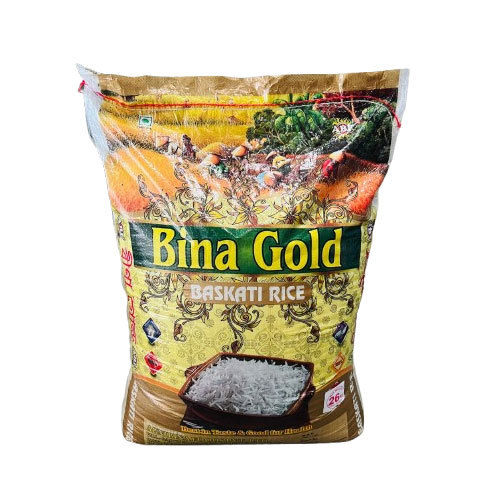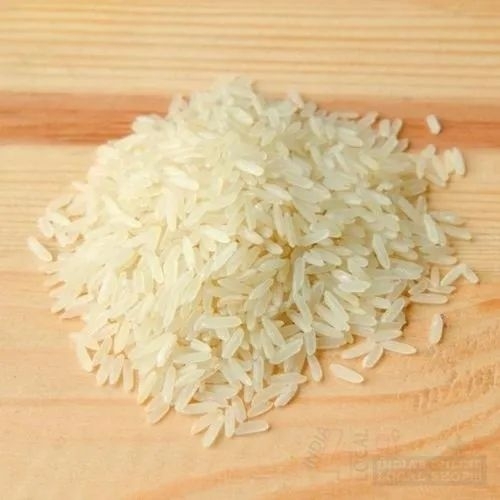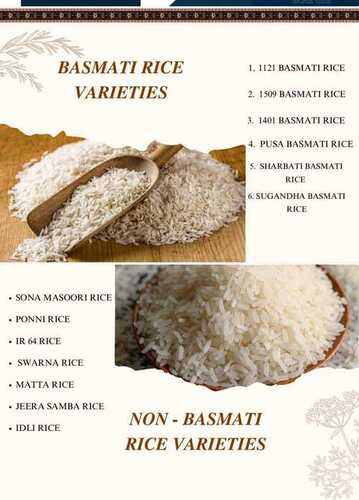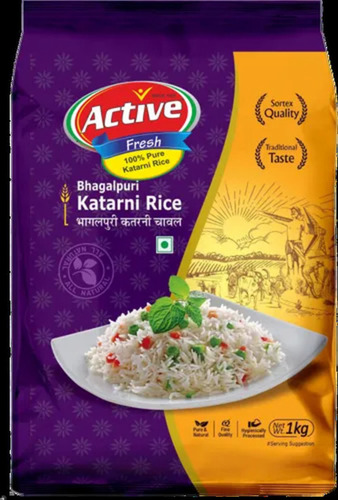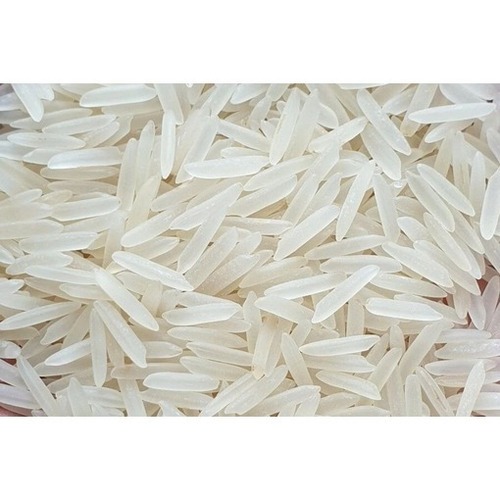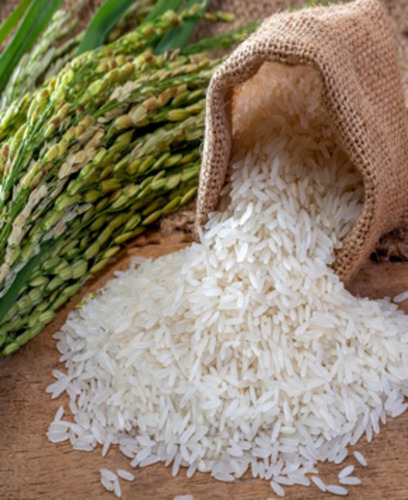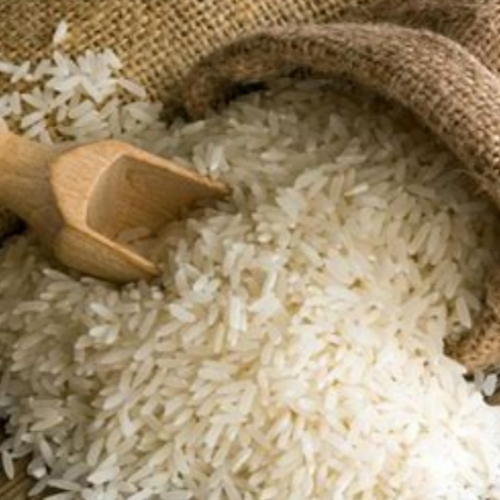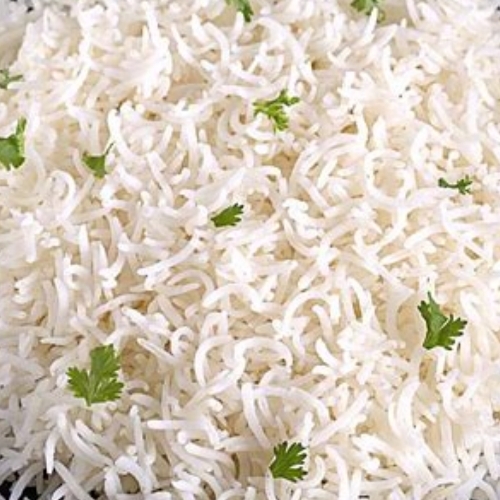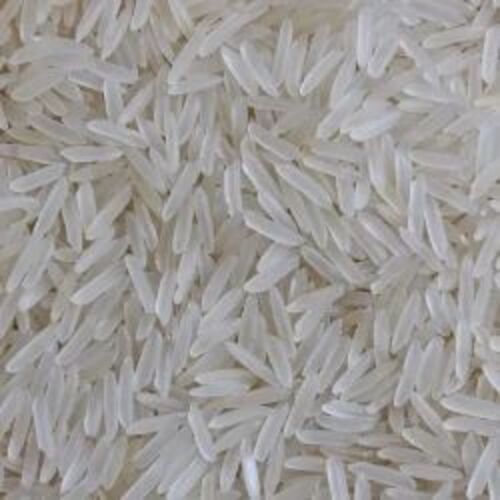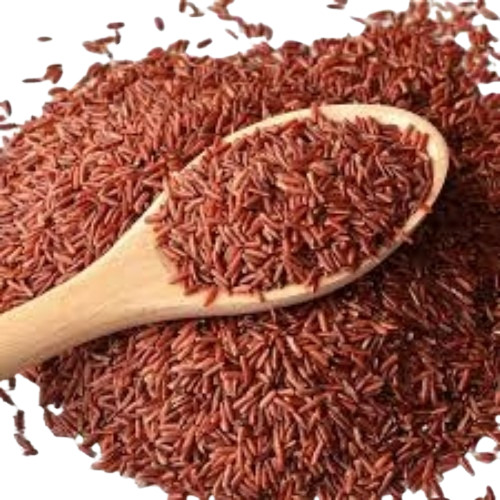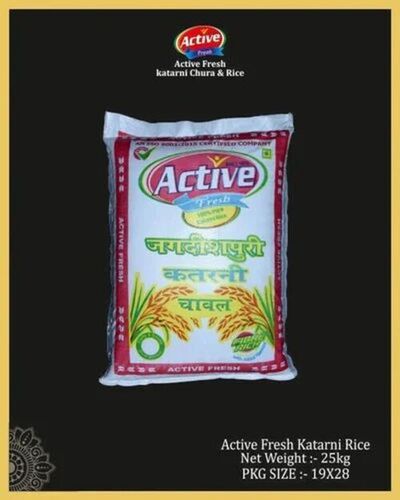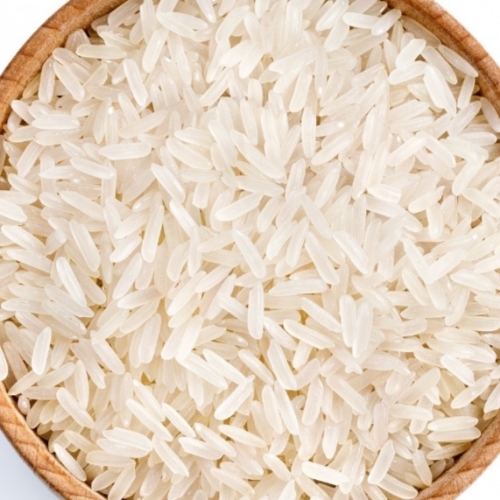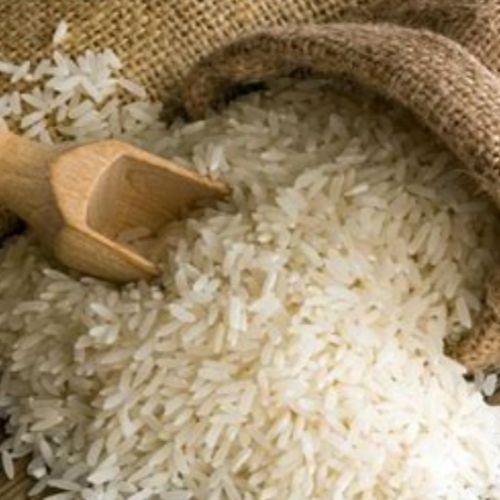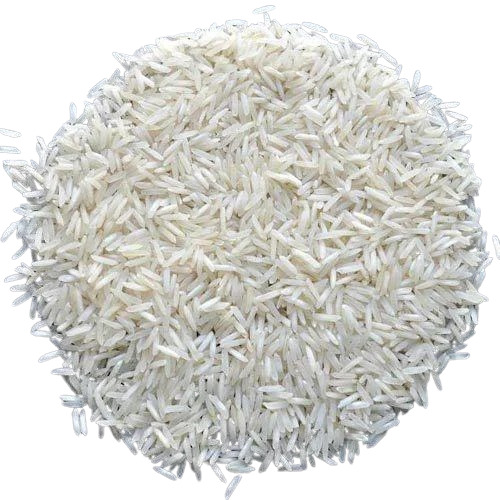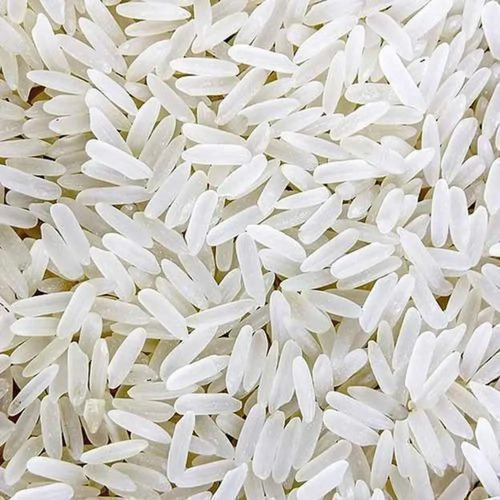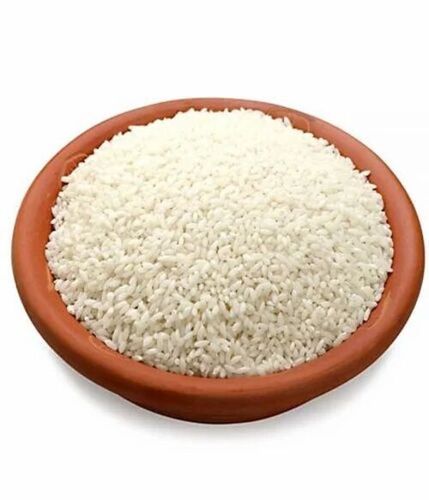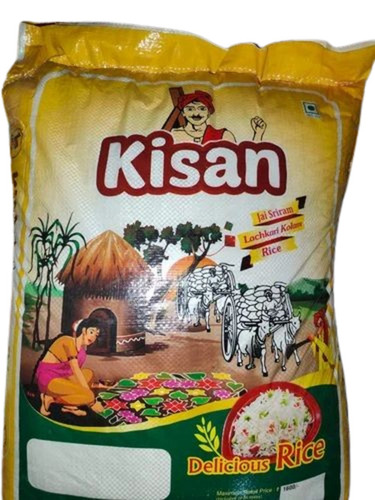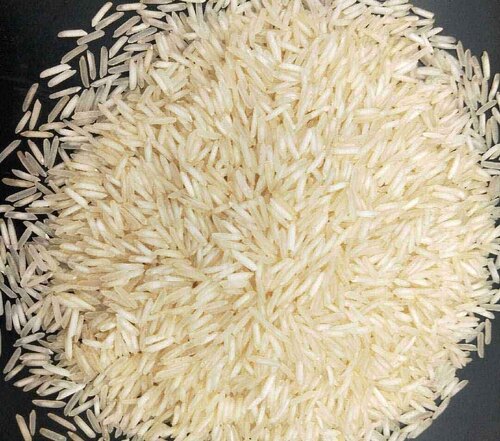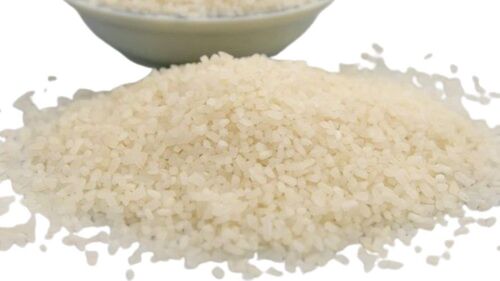Rice
(41688 products)Product Showcase
Raw Rice - Dried, Premium Quality Grain for Culinary Uses
By:
Aarush Agro Industries
Fortified Rice Production Line In Vadodara Shree Nakoda Enterprise, Driven Type: DELTA DRIVE
By:
Shree Nakoda Enterprise
White Basmati Rice
Price Trend: 90.00 - 210.00 INR/Ton
MOQ1 Ton/Tons
Product TypeDried
ProcessingRaw
Colorwhite
GradeA
StorageCOOL & DRY PLACES
1121 Steam Butter Rice Admixture (%): 5.00
Price Trend: 90.00 - 95.00 INR/Kilograms
MOQ25000 Kilograms/Kilograms
TypeMedium Grain Rice
Cultivation TypeCommon
StyleDried
DriedYes
Rice SizeMedium Grain
ColorGolden
Rich In Taste IR64 Parboiled Rice
MOQ25000 Kilograms/Kilograms
TypeOther, IR64 Parboiled Rice
DriedYes
Rice SizeLong Grain
ColorYellow
Vt Ecogreen Technologies Private Limited
Idukki
5 Years
Non Basmati Rice
Price Trend: 80.00 - 160.00 INR/Kilograms
MOQ1 Ton/Tons
TypeWhite Rice
Natural Healthy Pure Basmati Rice
Price: 60 INR/Kilograms
MOQ1000 Kilograms/Kilograms
TypeLong Grain Rice
Cultivation TypeOrganic
DriedYes
Physical FormSolid
Purity99%
Sahik Private Limited
Patna
2 Years
Raw Rice - Dried, Premium Quality Grain for Culinary Uses
Price Trend: 30.00 - 90.00 INR/Kilograms
MOQ25 Ton/Tons
DriedYes
Aarush Food Grain Pvt. Ltd
Karnal
7 Years
Fortified Rice Production Line In Vadodara Shree Nakoda Enterprise, Driven Type: DELTA DRIVE
Product DescriptionFortified Rice Production Line In Vadodara Shree Nakoda Enterprise
Shree Nakoda Enterprise
Vadodara
6 Years
White Raw Rice
Price Trend: 20.00 - 40.00 INR/Kilograms
MOQ25 MT Kilograms/Kilograms
TypeWhite Rice
Rice SizeMedium Grain
ColorWhite
Common Indian Basmati Rice
Price: 200 INR/Kilograms
MOQ100 Kilograms/Kilograms
Cultivation TypeCommon
StyleFresh
DriedYes
PurityHigh
Moisture (%)Nil
Yedhant International
Panchkula
3 Years
Common Long Grain Basmati Rice
Price: 112 INR/Kilograms
MOQ25 Kilograms/Kilograms
Cultivation TypeCommon
StyleFresh
Rice SizeLong Grain
PurityHigh
Moisture (%)Nil
Gokul Krishi Udyog Pvt. Ltd.
Hyderabad
3 Years
Common Basmati Rice
MOQ100 Kilograms/Kilograms
Cultivation TypeCommon
StyleFresh
Rice SizeMedium Grain
PurityHigh
Moisture (%)Nil
Maa Shaarda Enterprises
Patna
3 Years
Darjeeling Tea - Premium Whole Leaf, Aromatic Flavor Profile - Ideal for Authentic Brews
Price: 300 INR/Ton
MOQ80 Metric Ton
Supply Ability100 Per Month
Delivery Time10 Days
Main Export Market(s)Asia, Australia, Central America, North America, South America, Eastern Europe, Western Europe, Middle East, Africa
Easyproc Solutions Pvt Ltd
Delhi
2 Years
Ir 64 Raw Rice - Color: White
Price: 96 INR/Kilograms
MOQ100 Kilograms/Kilograms
TypeWhite Rice
Cultivation TypeCommon
StyleDried
Rice SizeShort Grain
ColorWhite
Purity100%
Trivento Trade Llp
Hyderabad
1 Years
Raw Rice - Cultivation Type: Organic
MOQ100 Kilograms/Kilograms
TypeMedium Grain Rice
Cultivation TypeOrganic
DriedYes
Physical FormRice
Purity100%
Sarwa Mangla Trade Links
Bilaspur
2 Years
BPT RAW RICE
Price: 64000 INR/Metric Ton
MOQ25 TONS Metric Ton
Payment TermsCash on Delivery (COD)
Supply Ability25 Per Week
Delivery Time1 Week
Jkn Agritek Overseas India Prvate Limited
Secunderabad
3 Years
Balak Bhog Banshkati Rice - Color: White
Price: 67 INR/Kilograms
MOQ25000 Kilograms/Kilograms
ColorWhite
Cultivation TypeCommon
DriedYes
Rice SizeLong Grain
Moisture (%)14
Crop YearJan - Dec Months
Harogouri Agro Product
Bankura
10 Years
Sugandha Basmati Rice - Long Thin Grains, Alluring Aroma, Hand Made Processing, Fresh Quality
Price: 790 USD ($)/Ton
MOQ25 Ton/Tons
Product TypeSugandha Basmati Rice
StyleFresh
FeatureNormal
Processing TypeHand Made
OriginIndia
1121 Basmati Rice - Color: White
Price: 85.0 INR/Kilograms
MOQ1000 Kilograms/Kilograms
Cultivation TypeOrganic
StyleDried
DriedYes
ColorWhite
PurityHigh
Moisture (%)Nil
Innovation Hub
Gurugram
1 Years
White Basmati Rice - 99% Pure Organic Dried Long-Grain Rice, Naturally White with Floral Aroma & Fluffy Texture
MOQ100 Kilograms/Kilograms
TypeWhite Rice
Cultivation TypeOrganic
StyleDried
DriedYes
Physical FormSolid
ColorWhite
Chandeep Global Exports
New Delhi
2 Years
White Rice - Medium Grain, Fresh, High Purity | Refined, High Carbohydrate, Ideal Base for Dishes
Price: 110 INR/Kilograms
MOQ100 Kilograms/Kilograms
Cultivation TypeCommon
StyleFresh
DriedYes
Rice SizeMedium Grain
PurityHigh
Moisture (%)Nil
Globus Global Trade Import And Export
Hyderabad
3 Years
Basmati Rice
Price: 1325.84 USD ($)/Twenty-Foot Container
MOQ1 Twenty-Foot Container
FOB PortMundra Port
Payment TermsCash in Advance (CID), Days after Acceptance (DA), Letter of Credit (L/C), Paypal
Supply Ability1000 Per Month
Yesraj Enterprises
Pune
13 Years
Basmati Rice - Organic White Rice, High Purity Long Grain with Fluffy Texture for Biryani, Pulao, Fried Rice
MOQ1000 Kilograms/Kilograms
TypeWhite Rice
Cultivation TypeOrganic
DriedYes
ColorWhite
PurityHigh
OriginIndia
Maxima Global Group
Hyderabad
1 Years
1121 White Sella Basmati Rice - Broken (%): 2%
Price: 199 INR/Kilograms
MOQ25000 Kilograms/Kilograms
TypeMedium Grain Rice
Cultivation TypeCommon
StyleDried
DriedYes
Rice SizeMedium Grain
ColorWhite
Midhu Exports And Imports
Hyderabad
4 Years
Sugandha Steam Rice - Broken (%): No
Price: 60.00 INR/Kilograms
MOQ10 Ton/Tons
ColorWhite
TypeWhite Rice
Cultivation TypeOrganic
StyleFresh
DriedYes
Rice SizeMedium Grain
Bharat Cereals Pvt. Ltd.
Karnal
5 Years
Sona Masoori Rice - Broken (%): 5 %
MOQ10 Ton/Tons
Cultivation TypeOrganic
StyleDried
DriedYes
Rice SizeLong Grain
ColorWhite
Purity100 %
Ms Agro And Exporters
Pune
1 Years
Baskathi Rice - Premium Medium Grain Rice, 95%-99% Purity, Dried for Extended Shelf Life of 6-12 Months, Sustainably Cultivated
Price: 50 INR/Ton
MOQ10 Ton/Tons
Cultivation TypeCommon
StyleFresh
DriedYes
Rice SizeMedium Grain
Purity95%-99%
Shelf Life6-12 Months
Agnibina Foods Private Limited
Burdwan
2 Years
Latest From Rice
Ready To Ship Rice
From Seed to Table: The Journey of Rice
Rice is a staple food for millions of people worldwide. From seed to table, the journey of rice is an amazing, which can be summarized in several steps.
The journey of the rice plant begins with the planting of the seeds. In fields that have been carefully prepared, rice seeds are often sown. To ensure that the seeds receive the right amount of moisture after being planted, they must be watered regularly. The growth phase is the next step in rice's journey. The rice plants will continue to grow and develop throughout this phase until they are prepared for harvest. The rice plants can be harvested when they are fully developed. Cutting the plants and eliminating the grains from the stalks are crucial procedures in the harvesting of rice. The rice must be handled carefully once it is harvested. The husks must be removed before the grains can be polished and made ready for ingestion. According to the degree of processing, the final item can be marketed as either white rice or brown rice.
The History of Rice Cultivation
The history of rice is lengthy and spans several continents and millennia. In various ancient civilizations, including China and India, rice has been a staple crop and food supply from the beginning of written history. It was not only consumed in these societies but also profoundly imprinted. Rice cultivated for the first time in China around ten thousand years ago. On its journey to the Middle East, Europe, and Africa; it then crossed all of Asia. Ancient civilizations including, the Egyptians, Greeks, and Romans appreciated and actively engaged in the cultivation of rice in particular. In addition to its cultural significance, rice has persisted as a staple meal due to its nutritional benefits and adaptability.
The Different Varieties of Rice
There are many different rice types to select from. White rice, jasmine rice, brown rice, basmati rice, wild rice, and sushi rice are the most popular varieties. Every kind is outstanding for an array of food and culinary tastes due to its unique flavor, appearance, and calorie count.
In fact, white rice, which exhibits a milder flavor and smoother consistency than other types, is among the most popular kinds of rice eaten globally. Contrarily, brown rice is whole grain rice that is rich in fiber and minerals, making it a superior option. The gorgeous perfume and a bit of sticky texture of jasmine rice are widely known. Basmati is another long-grain rice variety that is popular in Middle Eastern and Indian cuisine and has a unique nutty flavor. The common North American food known as "wild rice" is really the seed of aquatic grasses rather than a kind of rice. Its characteristic nutty flavor and chewy texture make it a popular addition to salads and grain bowls. Sushi rolls and other traditional Japanese dishes are typically made with short-grain rice known as sushi rice.
The Rice Growing Process
The rice growing process involves several stages, including land preparation, seedling production, transplanting, irrigation, and fertilization. It requires hard work and patience, but the result is worth it. From planting the seedlings to harvesting the rice, every step of the process is crucial in producing high-quality rice.
The Nutritional Benefits of Rice
In addition to being simply a grain, rice is a nutritious powerhouse providing an array of advantages. One of the key advantages is that rice grains contain a lot of carbohydrates. Human bodies receive the energy they require from carbohydrates to function throughout the day. It contains every essential amino acid that our systems require, particularly for vegans. It contains a sizable quantity of dietary fiber, which promotes digestion and lessens diarrhoea. Since it has fewer calories, it is an excellent choice for anybody seeking to reduce weight or whoever has concerns about their physical well-being. Its gluten-free characteristics render it an excellent choice for anybody who has an allergy to gluten.
The Environmental Impact of Rice Production
Several environmental effects may result from rice farming. First of all, rice paddies may function as wetlands, providing vital homes for several plant and animal species. They also serve as a natural filter, removing extra nutrients and pollutants from the water and lowering pollution levels. Additionally, rice farming is a great method for preserving soil since it may reduce soil erosion and enhance soil quality by incorporating organic matter. Rice production leaves a smaller environmental impact compared to that of numerous other crops. The rice plants collect significant amounts of carbon in their roots and ground. A farmer may opt for rice because it is an environmentally friendly product with fewer resources and pesticide needs if they would like to produce a crop with a less damaging impact on the environment.
FAQs: Rice
Q. What are the health benefits of rice in a balanced diet?
Ans. Because of its numerous nutritional advantages, rice is an essential component of a healthy diet. It includes significant quantities of complicated carbohydrates that offer the human body energy that lasts. It is great for individuals who are active or desire an ongoing increase in energy. It houses nutrients and vitamins that promote the general wellness of the body, like iron, potassium, calcium, magnesium, and B vitamins, among others.
Q. How does cooking rice affect its nutritional value?
Ans. Cooking rice could possess an impact on how nutritious it is. Uncooked rice is less edible and can be potentially hazardous, considering the fact that it might be higher in nutrients in certain respects. On the other hand, cooking rice makes it simpler to digest and absorb nutrients. Rice's nutritional content may vary based on its method and length of boiling. Undercooked rice may be harder to digest, while overcooked rice may lose some of its nutritional value. You need to employ an appropriate boiling technique, such as boiling, steaming, or pressure cooking, so as to maintain the rice's nutrients.
Q. Is brown rice healthier than white rice?
Ans. Brown rice is generally promoted to be healthier than white rice and for a good cause. Brown rice retains all of the fiber, nutrients, and minerals. In addition, bran and germ layers of white rice are removed during processing, which causes the loss of multiple essential vitamins and minerals. Brown rice contains a lower glycemic index than white rice, which means it increases blood sugar levels more gently and less rapidly after consumption inspite of possessing a higher health value. For people who have diabetes, this rice might be beneficial.
Q. How does rice consumption vary across different cultures?
Ans. A common grain in many civilizations throughout the world, rice is consumed in a number of ways based on regional customs and preferences. For instance, rice is a staple food and is consumed in enormous amounts across East and Southeast Asia. Rice is frequently consumed plain or with a few basic components in certain cultures, like Japan and Korea. It is prepared with aromatic spices, herbs, and sauces in other cultures, like Thailand and India. In South Asia, rice is the main supplier of carbs. In many African nations, rice is a main dish served with stews or sauces.
Related Blog Topic:
Manufacturers & Suppliers of Rice
Company Name | Member Since |
|---|---|
Yesraj Enterprises Pune, India | 13 Years |
Harogouri Agro Product Bankura, India | 10 Years |
Aarush Food Grain Pvt. Ltd Karnal, India | 7 Years |
Shree Nakoda Enterprise Vadodara, India | 6 Years |
Vanajakshi Traders Anantapur, India | 6 Years |
Harsiddhi Trade Link Amravati, India | 5 Years |
Vt Ecogreen Technologies Private Limited Idukki, India | 5 Years |
Sabari Exim Chennai, India | 5 Years |
Vision International Karnal, India | 5 Years |
Bharat Cereals Pvt. Ltd. Karnal, India | 5 Years |
Popular Products
